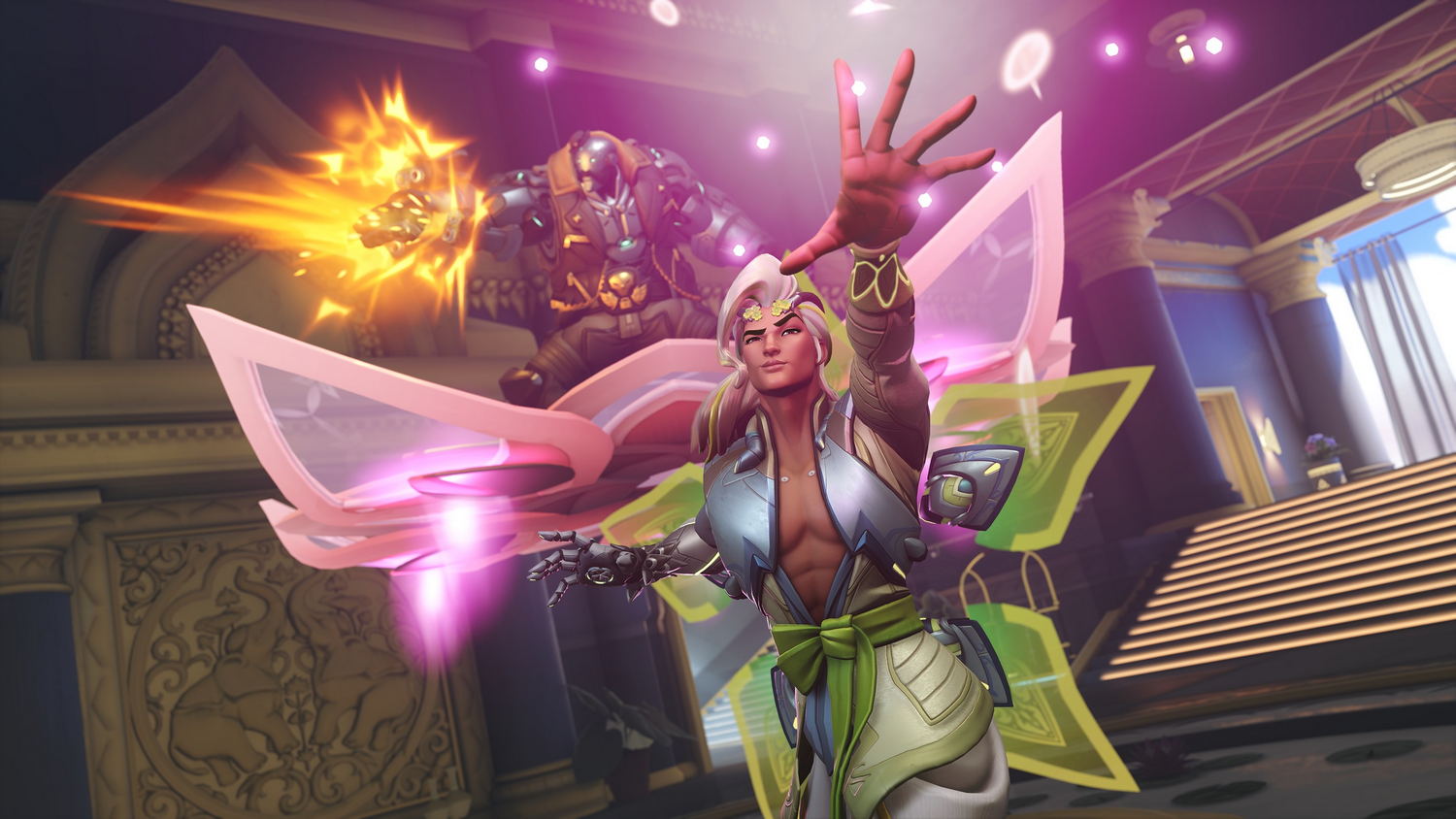Blizzard Confirms Reversion of Major Competitive Stadium Change Following Player Outcry in Overwatch 2 Season 19
Popular Now
 The Legend of Zelda
The Legend of Zelda
 BeamNG.drive
BeamNG.drive
 Candy Crush Saga
Candy Crush Saga
 Fortnite
Fortnite
 God of War Ragnarök
God of War Ragnarök
 Toca Boca World
Toca Boca World
 EA SPORT FC 25
EA SPORT FC 25
 Fall Guys
Fall Guys
 Stumble Guys
Stumble Guys
 Genshin Impact
Genshin Impact Blizzard Entertainment has quickly responded to widespread community dissatisfaction by announcing the imminent reversion of a controversial structural change implemented in Competitive Stadium with the launch of Overwatch 2 Season 19. The change, which saw the competitive format shift from a Best-of-Seven (Bo7) to a Best-of-Five (Bo5) structure, was met with immediate and significant backlash from the high-rank player base and esports hopefuls who felt it fundamentally undermined the mode’s tactical depth.
The highly popular and experimental Stadium mode—a unique blend of Overwatch hero shooter mechanics with RPG-like item and power progression—had its competitive integrity questioned almost instantly after the Season 19 “Haunted Masquerade” update went live on October 14, 2025. While the intention was to reduce match duration and combat player fatigue (a common issue with the often 45-minute-long Bo7 matches), the consensus among top-tier players was that the shortened format minimized the window for strategic counter-play and item build optimization, making the mode feel rushed and less rewarding. This represents a significant course correction by the developers, reinforcing their commitment to community feedback in the ever-evolving live service game landscape.
📉 The Issue: Why Best-of-Five Failed the Competitive Test
The core of the community’s frustration stemmed from the perceived convergence of the Competitive Stadium format with the less serious Quick Play Stadium format. Quick Play Stadium had already adopted the Bo5 structure in a previous season, and moving the ranked version to the same format blurred the lines between casual and serious play. High CPC keywords like “Competitive Integrity” and “Ranked Ladder Climb” dominated community discussions on platforms like Reddit and the official Blizzard forums.
The Critical Player Arguments:
- Reduced Strategic Depth: The Best-of-Seven format offered four crucial rounds to adapt, allowing for dramatic, match-flipping comebacks (often from a 0-3 deficit). The Bo5 format, requiring only three round wins, significantly reduced the chance for teams to pivot their hero comps, item builds, and powers. The limited rounds meant less time to accrue the necessary in-game cash for powerful, expensive Epic and Legendary items.
- Build Optimization Time: Stadium’s gameplay loop is defined by the mid-round purchasing of Perks and Gadgets. The longer matches provided more resources, enabling players to complete complex, game-defining hero builds. By accelerating the match length, many players felt they couldn’t reach the full potential of their chosen build, penalizing strategic investment over simple, aggressive early-game items.
- Value Proposition: The extra commitment of time for a Competitive Matchmaking queue, which often includes stricter grouping rules (like the highly contested Wide Grouping restriction), was no longer justified if the match length and tactical depth were virtually identical to the Quick Play mode.
Game Director Aaron Keller had initially confirmed the switch to Best-of-Five via social media, citing the desire to “shorten match length while preserving the depth and decision-making.” However, player data and vocal feedback indicated that the depth was, in fact, the casualty of this decision. This incident highlights the delicate balance Blizzard must maintain when making significant structural changes to popular Overwatch 2 game modes.
🔄 Blizzard’s Immediate Reversion Plan
In a rapid response typical of modern AAA game development responding to player sentiment, a developer update confirmed the rollback. The developers acknowledged that while match length was a key concern, the current implementation of the Bo5 format removed too much of the “tension and narrative complexity” that defined Competitive Stadium. The goal for this hotfix is to restore the Best-of-Seven structure while simultaneously increasing the in-game economy payout to partially address the duration issue.
 The announced changes for the forthcoming mid-season patch include:
The announced changes for the forthcoming mid-season patch include:
- Reinstatement of Bo7: Competitive Stadium will return to the original four-wins-to-win structure, allowing for seven potential rounds of play.
- Accelerated Cash Flow: To mitigate the extreme match length, the developers are significantly boosting the Round Completion Cash for Rounds 1, 2, and 3, allowing players to afford key Stadium Powers and Gadgets earlier in the match. This is a crucial compromise that addresses the time investment while preserving the strategic element of late-game item usage.
- Perk and Hero Balance Adjustments: The patch will also address several hero balance concerns that arose with the Season 19 launch, notably the perceived over-tuning of new Stadium heroes like Hazard and Sojourn, who were widely regarded as being too dominant in the shorter Bo5 format.
This swift action is a strong message to the community that the developer team is listening and prioritizing the core gameplay loop and long-term competitive viability of its experimental modes. The development cycle of live-service games is often a public beta, and this reversion serves as a textbook example of community-driven design correction.
📈 Looking Ahead: Competitive Gaming and the Stadium Mode
The initial Season 19 changes also introduced the new Gadget system and significant quality-of-life updates to the Armory. These positive changes, designed to improve the mode’s accessibility and item customization, remain intact and will now be applied to the restored Best-of-Seven format.
 The return to the longer format is expected to dramatically increase the value of late-round team composition changes and high-cost Ultimate Abilities. For esports betting and dedicated competitive players, the Bo7 offers more reliable data and a better measure of long-term skill, as opposed to the fast, sometimes volatile nature of the Bo5. This move ensures that Competitive Stadium continues to be viewed as a serious, legitimate alternative to the core Overwatch 2 experience, rather than a mere Arcade mode variant.
The return to the longer format is expected to dramatically increase the value of late-round team composition changes and high-cost Ultimate Abilities. For esports betting and dedicated competitive players, the Bo7 offers more reliable data and a better measure of long-term skill, as opposed to the fast, sometimes volatile nature of the Bo5. This move ensures that Competitive Stadium continues to be viewed as a serious, legitimate alternative to the core Overwatch 2 experience, rather than a mere Arcade mode variant.
The developer team’s commitment to iterating on the Stadium experience, even by rolling back highly publicized structural changes, demonstrates their investment in this unique mode as a key pillar of Overwatch 2’s future content strategy. The ultimate goal is a balanced, deep, and engaging competitive environment, and the community has successfully pushed the design back in that direction.







